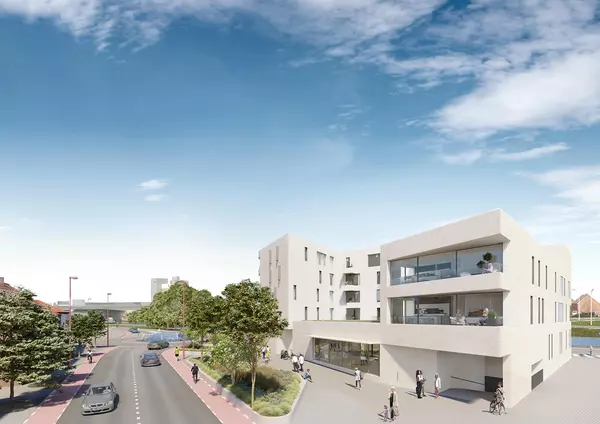Richmond weighing adoption of first citywide preservation plan
A two-year effort to establish Richmond’s first citywide guide for preserving its cultural resources – including buildings and other assets – is entering the homestretch, though concerns about the plan remain for at least one stakeholders group involved in the process.
The Richmond Planning Commission is scheduled to vote today on a resolution to adopt the proposed Cultural Heritage Stewardship Plan, a 200-page document that was recommended in the Richmond 300 master plan and would be added as an amendment to that larger growth guide.
Specifically, Richmond 300 called for the creation of a citywide “preservation plan” to “establish near- and long-term preservation priorities” and “identify proactive and innovative strategies to protect the character, quality, and history of the city.”
According to the document, the Cultural Heritage Stewardship Plan is intended to establish “a clear, equitable, and predictable approach to identifying, recognizing, and conserving the community’s cultural and historic assets,” which it defines as above-ground resources such as buildings and landscapes, below-ground resources like archaeological sites or cemeteries, and intangible resources such as lost sites and oral histories.
The city went in with the Virginia Department of Historic Resources to hire Commonwealth Preservation Group, a Norfolk-based consulting firm, to develop the plan over two years starting in January 2023. The effort was co-funded through DHR’s Survey and Planning Cost Share Grant Program, which assists local governments in historic preservation planning initiatives.
Of the firm’s total fee of about $146,000, the city paid about $118,000 and the state paid $28,000, said Kim Chen, a senior manager with Richmond’s Planning and Development Review department who led the city side of the effort with PDR Director Kevin Vonck.
The CHSP builds on existing preservation efforts such as Richmond’s Old and Historic Districts, which are regulated by the Commission of Architectural Review and require its approval for exterior changes to buildings in those districts.
While those districts cover specific areas of the city, such as Shockoe Slip or Monument Avenue, the CHSP would be the first citywide guide to approaching preservation in Richmond, Chen said.
Like Richmond 300, the plan recommends several “Big Moves” to identify resources and incentivize preservation, such as conducting a citywide architectural and archaeological assessment and re-establishing the city’s real estate tax abatement program, which was credited with spurring historic preservation rehab projects but was discontinued six years ago due to concerns about inequities in its results.
Chen said the CHSP is not a regulatory document and should be seen as a guide for identifying resources and planning for potential growth around them.
“It doesn’t create any new rules or regulations. It doesn’t create any new incentives. But it does say here’s a guiding document for how we should be thinking about the cultural resources in the city of Richmond and why we should be thinking about them this way,” Chen said. “It says here’s a menu of things that we might want to consider doing to protect those resources.”
While the plan has garnered dozens of letters of support from residents and other stakeholders ahead of tonight’s meeting, the city has also received a letter from local group Shockoe Partnership expressing concerns about the plan.
Specifically, the group, which represents the development community in the Shockoe area with interest in historic preservation, listed concerns about “potential overreach” and redundancy with the Old and Historic Districts already in place; impacts on city departments in administering the plan and subsequent impacts on development and investment; and a lack of defined incentives for a revived rehab tax abatement program.
“This program has historically been effective in supporting the adaptive reuse of historic properties. However, these incentives must be in place before or concurrently with the adoption of any new regulatory framework,” Shockoe Partnership’s letter reads.
“Moving forward with CHSP without simultaneously enacting the tax abatement reinstatement would impose burdens without adequate support, undermining the plan’s stated goals,” adds the letter, which asks that the Planning Commission delay its vote until the incentive program is more clearly defined.
The letter is signed by Shockoe Partnership President Spencer Grice, a principal with architecture firm SMBW. A call to Grice on Monday was not returned.
Chen said the plan calls for such incentives but is not intended to be the regulatory document for them. Any incentives and regulations that might follow the plan’s adoption would likewise require approvals from the commission and Richmond City Council.
“I think there’s a misunderstanding that this is going to be a regulatory document, and it is not. It’s like all other plans: it is just a guiding document,” Chen said. “Does it suggest some regulatory things? Absolutely. But overwhelmingly it suggests incentives for preservation.”
An earlier draft of the plan released last year prompted a letter to Commonwealth Preservation Group from Charles Samuels, a local attorney and former City Council president who said he represented a group of affected property owners. The letter, which another party shared with BizSense, said the group had not been engaged in the plan’s development and took issue with its definition of “historic,” contending that it read as if any building over 50 years old could fit the label.
Noting CPG’s findings that roughly 81% of the city’s buildings are over 50 years old, the letter stated: “Thus, under CPG’s definition, roughly 81% of the City’s buildings are historical structures,” adding: “This is absurd and ahistorical.”
“If every old building is historical, then none is,” the letter said. “For CPG’s work to be of any value to the City, CPG must identify which of these old structures truly has significant historical value that needs to be preserved.”
A call to Samuels last week was not returned.
Cyane Crump, executive director of Historic Richmond, said Monday that the 50-year-old detail in the “historic” definition is just one of several considerations for a property that are consistent with those used for the National Register of Historic Places.
Crump noted that the plan includes a fuller definition of “historic,” which, according to the document, can be a property “associated with an important event in history, a significant person, distinctive architectural or engineering characteristics or the work of a master,” and other considerations beyond the 50-years-old requirement.
It says a historic building is also considered one that “contributes to the character of a district, or is associated with a site that is likely to yield critical information” or “possesses sufficient physical integrity to convey that significance.”
“It is not enough that you simply be old,” Crump said of the “historic” definition in the plan, which notes that the 81% means that approximately 55,000 buildings in Richmond “are of historic age, and therefore, according to the National Park Service, should be evaluated for their significance.”
“It’s trying to identify and recognize historic resources so that we can then manage around those resources,” Crump said of the plan overall. “A lot of what’s in the plan are different types of incentives to help property owners and community groups…care for and maintain historic and cultural resources.”
Crump, who served on the plan’s community advisory committee, said such incentives can’t be put into place without a guiding document like CHSP that calls for them.
“There are all these ‘carrots’ that are in this plan that are not anywhere else, and without adopting this plan, we won’t have the policy recommendations for these good things, which are the product of extensive stakeholder discussions with the development community and with the neighborhoods and historic property owners,” she said.
The full plan as proposed can be viewed on the city’s website.
If adopted at the Planning Commission’s 6 p.m. meeting today, the plan would be introduced at City Council’s June 23 meeting and referred to the Land Use, Housing and Transportation Standing Committee before coming back to council for a final vote at its July 28 meeting.
The post Richmond weighing adoption of first citywide preservation plan appeared first on Richmond BizSense.
Recent Posts
GET MORE INFORMATION

Agent | License ID: 0225209440











